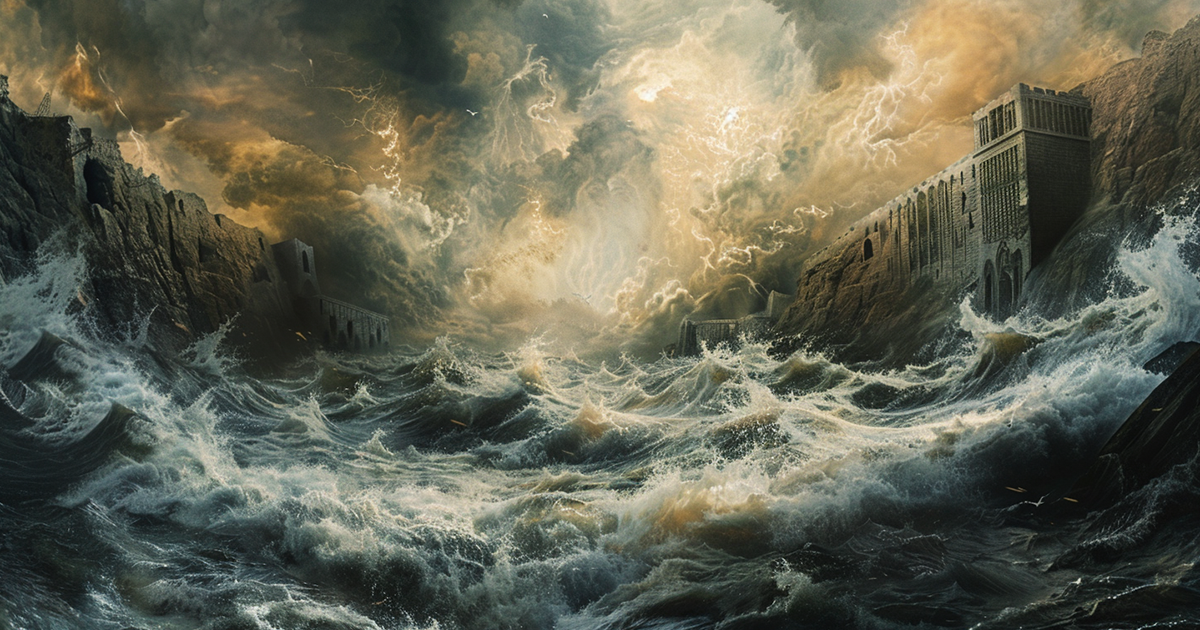Contained within the annals of history are stories that defy the constraints of time, connecting diverse societies and cultures. Among these narratives resides a legend veiled in the depths of antiquity, a story that has resonated through generations, imprinting itself on the collective memory of humanity. Today, we venture into the core of a venerable saga, illuminating its origins and deciphering the links that bind it to a beloved narrative cherished by many.
Between the 10th and 6th centuries BC, the legend of Noah’s Ark emerged, finding its place in the Jewish Torah and the Old Testament. Yet, what often goes unnoticed is the remarkable resemblance this story shares with an even more ancient tale woven by the erudite minds of the ancient Sumerian civilization.
Within the Sumerian flood narrative, we encounter a hero entrusted with a monumental task—to construct an ark and safeguard Earth’s diverse species from an imminent cataclysm unleashed by the divine. This story traces its origins to the epics of Atrahasis and Gilgamesh, manuscripts that precede the biblical rendition by a millennium.
The Sumerians, thriving in what is now Iraq around 4,000 BC, left behind a legacy stretching across millennia. Theirs was a culture steeped in richness, where clay tablets bore witness to the deeds of gods and mortals alike. Among these ancient inscriptions lies the tale of the Deluge, inscribed in cuneiform script—a lasting tribute to their civilization.

At the heart of the Sumerian pantheon resided a diverse pantheon of deities, each governing distinct aspects of the universe. Anu, the Supreme Sky God, reigned alongside Enlil, the Earth deity, and Enki, the lord of the watery depths. It was these celestial beings who ordained the destiny of humanity, unleashing the deluge to purify the Earth of its sins.
Amidst this cosmic turmoil emerges our central protagonist—Zeus Sudra, Atrahasis, or Uta Napishtim, known by various appellations across epochs and regions. His tale unfurls amidst the celestial schemes, as he heeds the counsel of his divine benefactor and embarks on a mission to safeguard life amid the floodwaters.
The similarities between the Sumerian tale and its biblical counterpart are unmistakable. From the construction of the ark to the avian scouts sent in quest of land, the reverberations of ancient Mesopotamia echo through the corridors of time. However, within these parallels lie nuanced divergences, reflections of evolving societies and theological perspectives.
As we traverse the annals of time, we encounter the melding of civilizations, where the Hebrew people, descendants of the Fertile Crescent, intertwined with the legacy of Sumer. It is within this crucible of cultural interchange that the saga of Noah’s Ark took shape, adapted to harmonize with the tenets of a nascent faith.
In the tapestry of religious mythology, stories are borrowed, reshaped, and reinvented, with each iteration serving as a mirror of the convictions and aspirations of its adherents. The Sumerian flood narrative stands as a testament to the enduring influence of myth, a tale interwoven into the tapestry of human consciousness.
By unraveling the intricate tapestry of ancient legends, we extract insights into humanity’s shared legacy, where stories transcend boundaries and languages, resonating with our common roots and aspirations. As we gaze upon the waters of antiquity, may we discover comfort in recognizing that, across epochs, we are bound together by the strands of a shared narrative—one that continues to shape our perception of the world and our role within it.
